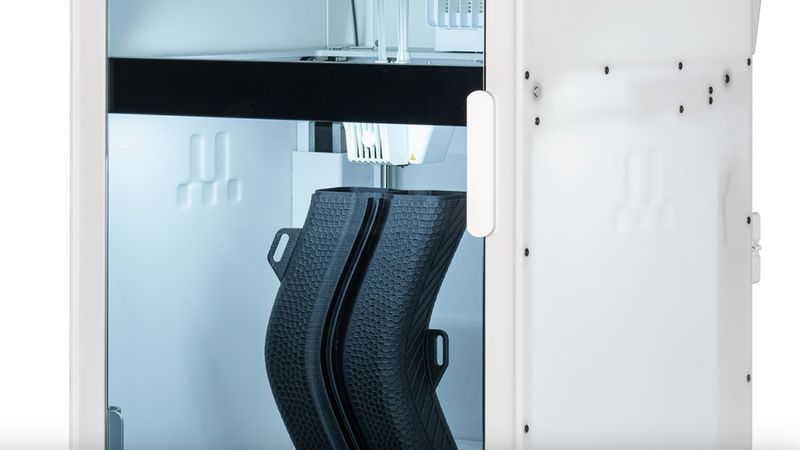3D Composite Printing: Revolutionizing Manufacturing with Carbon Fiber Filaments
3D composite printing is transforming manufacturing by combining the flexibility of additive manufacturing with enhanced material properties. This innovative technology enables the creation of complex parts with improved strength, stiffness, and performance characteristics.
This article was first published on
ultimaker.com3D composite printing is transforming manufacturing by combining the flexibility of additive manufacturing with enhanced material properties.
This innovative technology enables the creation of complex parts with improved strength, stiffness, and performance characteristics.
As industries seek lighter, stronger, and more customizable components, 3D composite printing with carbon fiber filaments is emerging as a game-changing solution.
If you are looking to print a wide variety of filaments with precision and speed, UltiMaker's new S8 printer might be the solution for you. Powered by the new UltiMaker Cheetah motion planner, you get up to 4x productivity making it the fastest dual material 3D printer made in Europe.
Understanding 3D composite printing technology
3D composite printing, also known as composites additive manufacturing, combines the flexibility of 3D printing with enhanced material properties. This advanced technique creates complex parts with improved strength, stiffness, and other desirable characteristics by extruding or depositing composite materials layer-by-layer.
The composite materials typically consist of a polymer matrix reinforced with fibers or particles. Key aspects of this technology include:
- Matrix materials: Thermoplastics like nylon, ABS, and PEEK, as well as thermoset resins
- Reinforcements: Carbon fiber, glass fiber, and Kevlar to enhance mechanical properties
- Fiber types: Chopped/short fibers or continuous long fibers, each offering different benefits
- Printing methods: Fused deposition modeling (FDM) and direct ink writing
The precise control over fiber orientation and distribution during printing allows for optimized part strength and performance. This level of customization sets 3D composite printing apart from traditional composite manufacturing methods.
Benefits that make this technology attractive for various industries include:
- Design freedom to create complex geometries
- Improved strength-to-weight ratio compared to non-reinforced plastics
- Ability to tailor material properties for specific applications
- Reduced material waste compared to subtractive manufacturing
- Potential for faster prototyping and production of composite parts
As the technology advances, 3D composite printing is finding applications in aerospace, automotive, medical, and other industries where high-performance, lightweight materials are crucial. Ongoing research aims to expand the range of printable composites and improve the mechanical properties of printed parts to rival traditionally manufactured composites.
With a solid understanding of 3D composite printing technology, let's explore one of its most promising materials: carbon fiber filaments.
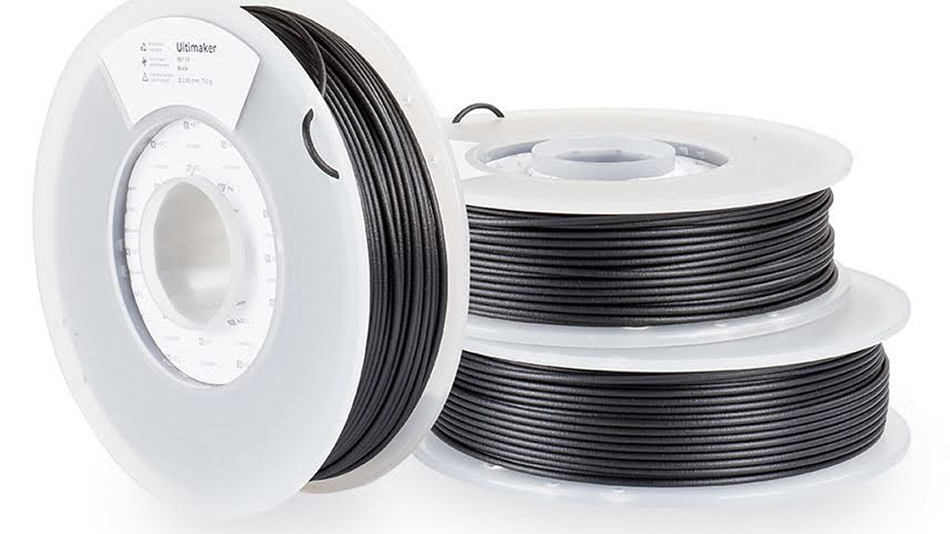
Carbon fiber 3D printer filament - strength and versatility
Carbon fiber 3D printer filament offers exceptional strength and versatility for additive manufacturing applications. By incorporating chopped carbon fibers into thermoplastic materials like nylon or ABS, these composite filaments produce parts with significantly enhanced mechanical properties compared to standard plastics.
Key advantages of carbon fiber filament include:
- High strength-to-weight ratio: Carbon fiber reinforcement dramatically increases tensile strength and stiffness while maintaining low density
- Improved dimensional stability: The carbon fibers help reduce warping and shrinkage during printing
- Enhanced heat resistance: Allowing printed parts to withstand higher temperatures
- Electrical conductivity: Carbon fibers can impart some degree of conductivity to otherwise insulating plastics
Typical strength improvements over base materials include:
- 30-50% increase in tensile strength
- 25-40% increase in flexural strength
- 50-100% increase in stiffness/modulus
The exact performance gains depend on factors like fiber content, fiber length, and base polymer. Most carbon fiber filaments contain 15-20% chopped carbon fiber by weight.
Common applications leveraging the strength of carbon fiber filaments include:
- Functional prototypes and end-use parts
- Tooling and manufacturing aids
- Aerospace and automotive components
- Sporting goods and prosthetics
While more challenging to print than standard materials, carbon fiber filaments enable the additive manufacturing of high-performance composite parts with properties approaching those of traditional carbon fiber composites. Their unique combination of strength, light weight, and printability makes carbon fiber filaments a powerful option for demanding 3D printing applications.
Now that we've explored the capabilities of carbon fiber filaments, a common question arises: Can you actually 3D print with pure carbon fiber?
What can you 3D print with carbon fiber? Exploring possibilities
The short answer is yes, carbon fiber can be 3D printed using specialized composite 3D printing technologies. There are two main approaches to 3D composite printing with carbon fiber:
Chopped carbon fiber filaments
This method uses thermoplastic filaments (like nylon or ABS) that have short carbon fiber strands mixed in. The filament can be printed on standard fused deposition modeling (FDM) 3D printers. Benefits include:
- Increased strength and stiffness compared to standard plastics
- Improved dimensional stability and reduced warping
- Compatible with many existing FDM printers
However, the short fibers limit the strength gains compared to continuous fiber methods.
Continuous carbon fiber printing
More advanced 3D composite printing systems can print with continuous carbon fiber strands. This typically involves:
- Dual extruders - one for plastic matrix, one for fiber
- Specialized cutting mechanism for the continuous fiber
- Software to control fiber placement
Continuous fiber reinforcement provides much greater strength improvements, approaching the properties of traditional carbon fiber composites.
Applications and possibilities
3D printing with carbon fiber opens up new possibilities for creating strong, lightweight parts with complex geometries. Potential applications include:
- Aerospace components
- Automotive parts
- High-performance sporting goods
- Robotics and drones
- Prosthetics and medical devices
As the technology continues to advance, 3D composite printing with carbon fiber is enabling more industries to leverage the benefits of these high-performance materials in additive manufacturing.
With an understanding of how carbon fiber can be 3D printed, let's compare its performance to traditional 3D printing materials.
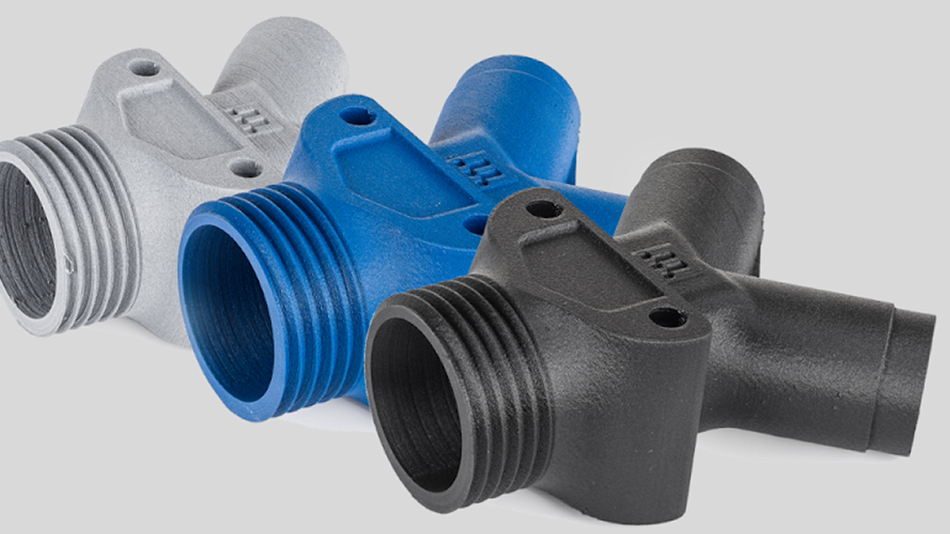
Comparing carbon fiber filament to traditional materials
Carbon fiber filament offers significant advantages in strength and performance compared to traditional 3D printing materials like PLA or ABS. Some key comparisons include:
Strength
Carbon fiber filament is significantly stronger than PLA and other common 3D printing plastics. Typical carbon fiber-reinforced filaments can provide:
- 30-50% increase in tensile strength
- 25-40% increase in flexural strength
- 50-100% increase in stiffness/modulus
This enhanced carbon fiber filament strength allows for printing parts that can withstand higher loads and stresses compared to standard materials.
Weight
Despite the increased strength, carbon fiber composites maintain a low density similar to or less than PLA. This results in parts that are stronger yet still lightweight.
Dimensional stability
The carbon fiber reinforcement helps reduce warping and improves dimensional accuracy compared to pure plastics. This allows for printing larger parts with better tolerances.
Heat resistance
Carbon fiber filaments typically have higher heat deflection temperatures than PLA or ABS, allowing printed parts to withstand higher operating temperatures.
Electrical properties
Unlike insulating plastics, carbon fiber composites can provide some degree of electrical conductivity, which may be beneficial for certain applications.
Considerations
While carbon fiber filaments offer many advantages, there are some tradeoffs to consider:
- Higher cost than standard filaments
- More abrasive - requires hardened nozzles
- Reduced flexibility compared to pure plastics
- More challenging to post-process (sanding, painting, etc.)
Overall, carbon fiber-reinforced filaments enable 3D printing of stronger, stiffer, and more dimensionally stable parts compared to traditional materials. This makes them well-suited for functional prototypes and end-use parts that require enhanced mechanical properties.
Now that we've compared carbon fiber filaments to traditional materials, let's explore the industries and applications benefiting from this advanced technology.
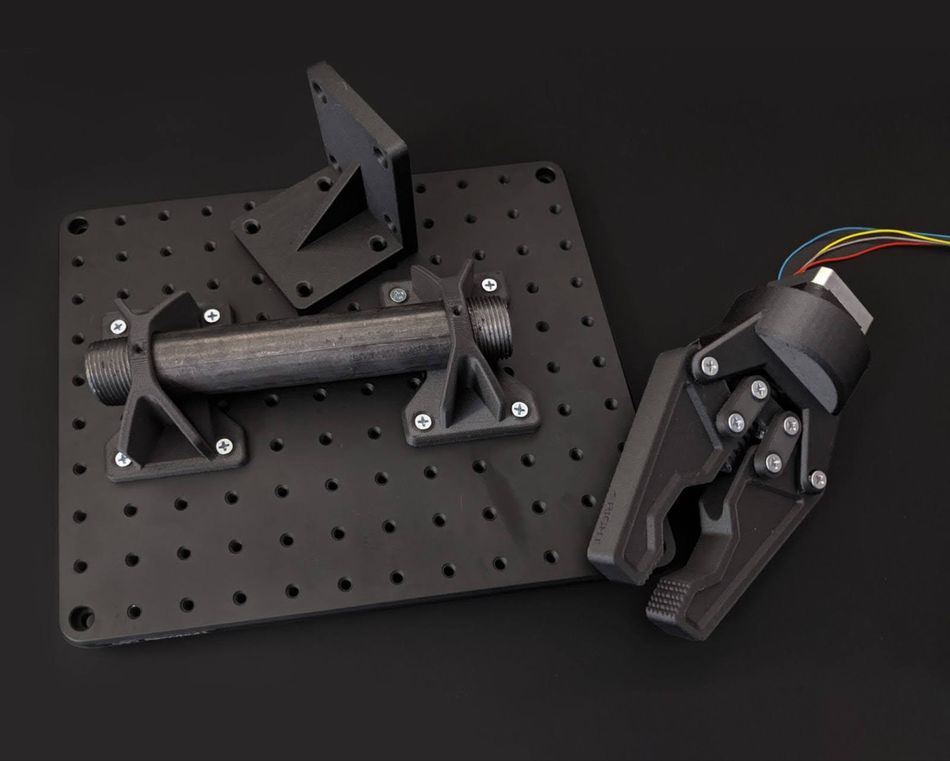
Applications and industries benefiting from 3D composite printing
3D composite printing is revolutionizing manufacturing across multiple industries by enabling the production of strong, lightweight parts with complex geometries. Some key applications and industries benefiting from this technology include:
Aerospace
The aerospace industry is leveraging composites additive manufacturing to create:
- Lightweight structural components
- Complex ducting and interior cabin parts
- Tooling and manufacturing aids
- Prototype and replacement parts
3D printed composite parts allow aerospace manufacturers to reduce weight, fuel consumption, and costs while improving performance.
Automotive
In the automotive sector, 3D composite printing is being used for:
- Prototyping of body panels and components
- Production of lightweight structural parts
- Custom interior components
- Tooling for manufacturing processes
The ability to rapidly iterate designs and produce complex geometries is accelerating innovation in the automotive industry.
Medical
The medical field is adopting composites additive manufacturing for:
- Patient-specific implants and prosthetics
- Anatomical models for surgical planning
- Dental applications like crowns and bridges
- Customized orthopedic braces and supports
3D printed composites enable the production of biocompatible parts with properties tailored to specific medical needs.
Sports and recreation
In sports equipment manufacturing, 3D composite printing is used to create:
- Customized protective gear
- Lightweight bicycle components
- Golf club heads and inserts
- High-performance running shoe soles
The technology allows for rapid prototyping and production of equipment optimized for individual athletes.
Industrial manufacturing
Across various manufacturing sectors, composites additive manufacturing is enabling:
- On-demand production of spare parts
- Customized tooling and fixtures
- Functional prototypes for testing
- Small batch production of specialized components
3D composite printing is reducing lead times and inventory costs while increasing flexibility in industrial manufacturing.
As the technology continues to advance, 3D composite printing is poised to expand into new applications and industries, driving innovation in lightweight, high-performance parts across the manufacturing sector.
With a clear understanding of current applications, let's look ahead to the future trends shaping 3D composite printing technology.
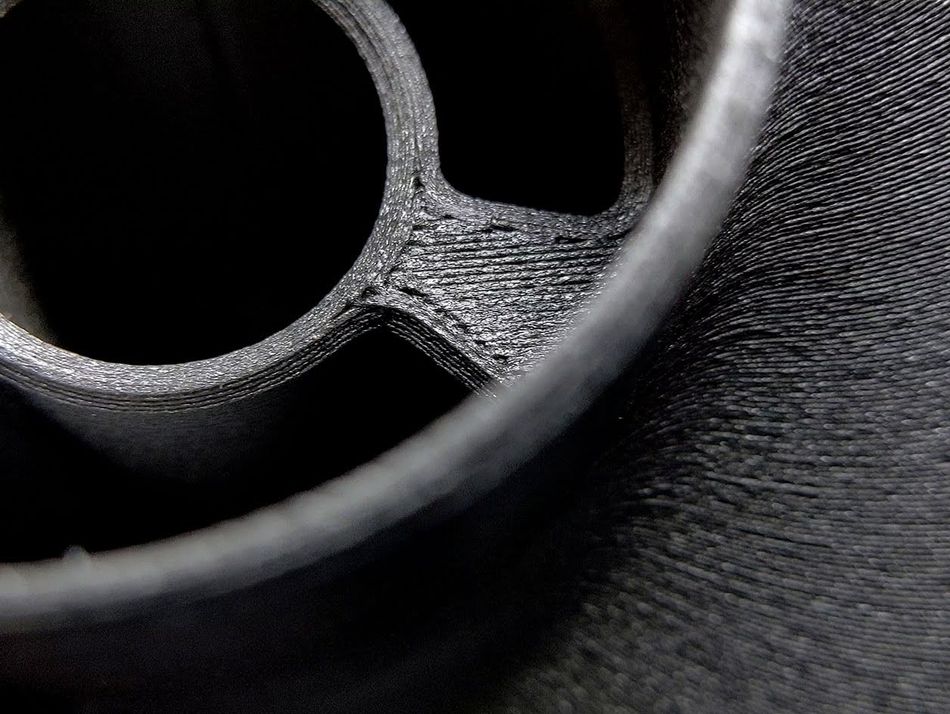
Future trends in 3D composite printing technology
The field of 3D composite printing is rapidly evolving, with several key trends shaping its future development:
Advanced materials
Researchers are developing new composite materials optimized for 3D printing, including:
- High-performance thermoplastics reinforced with carbon nanotubes and graphene
- Bio-based and recyclable composite filaments
- Multi-material composites with tailored mechanical and functional properties
Improved fiber alignment
New techniques are emerging to achieve better alignment of continuous fibers during printing:
- Magnetic field-assisted alignment of carbon fibers
- Ultrasonic vibration to orient fibers along print paths
- Automated fiber placement integrated with extrusion printing
Faster printing speeds
Advancements in print head design and material formulations are enabling faster deposition of carbon fibre 3D printer filament and other composites:
- High-flow nozzles for rapid extrusion of fiber-filled materials
- Pellet-fed extruders for increased material throughput
- Multi-nozzle systems for parallel deposition
Larger build volumes
Manufacturers are developing printers with expanded build volumes for large composite parts:
- Gantry-style systems for printing automotive and aerospace components
- Robotic arm printers with 6+ axes of motion
- Hybrid systems combining additive and subtractive manufacturing
In-situ monitoring and quality control
Advanced sensors and machine learning algorithms are being integrated to improve print quality:
- Real-time monitoring of fiber orientation and distribution
- Closed-loop control of printing parameters
- Non-destructive testing of printed parts
As these trends continue to advance, 3D composite printing is poised to enable new applications in aerospace, automotive, medical, and other industries requiring high-performance, lightweight parts with complex geometries.
Embracing the future of manufacturing with 3D composite printing
3D composite printing represents a significant leap forward in additive manufacturing technology. By combining the design freedom of 3D printing with the enhanced properties of composite materials, this innovative approach is opening new possibilities across industries. From aerospace components to medical implants, the ability to create strong, lightweight parts with complex geometries is driving innovation and efficiency.
As the technology continues to evolve, we can expect to see even more advanced materials, faster printing speeds, and improved quality control. These developments will further expand the applications of 3D composite printing, potentially revolutionizing how we design and manufacture products.
For businesses and engineers looking to stay at the forefront of manufacturing technology, exploring the capabilities of 3D composite printing is essential. By embracing this technology, companies can gain a competitive edge through faster prototyping, more efficient production, and the ability to create parts that were previously impossible or impractical to manufacture.
The future of manufacturing is here, and it's being shaped by the incredible potential of 3D composite printing with carbon fiber filaments.
